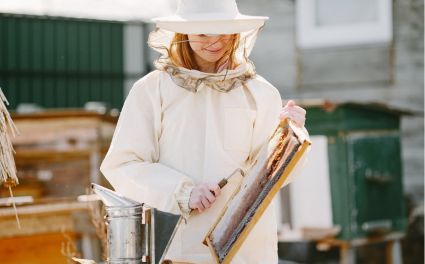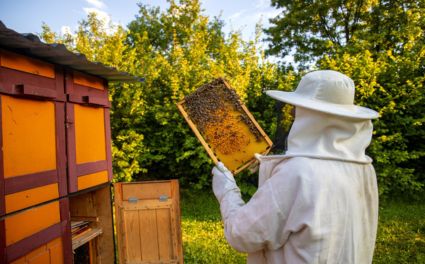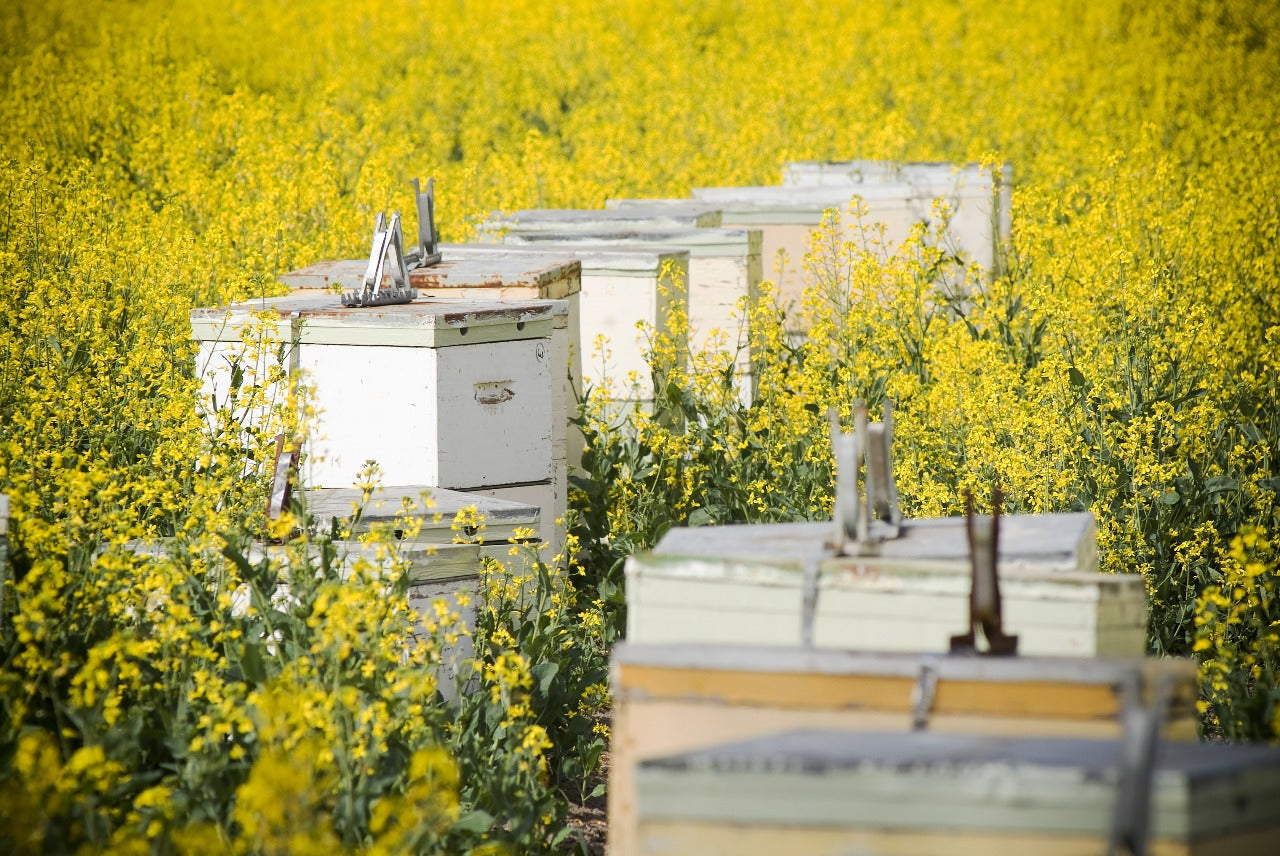Bees are among the most fascinating creatures on Earth. They tirelessly pollinate crops, produce golden honey, and live in highly organized colonies that form the foundation of our ecosystem. Yet, handling thousands of buzzing insects can be risky without the right knowledge and tools. So how do beekeepers manage this delicate task safely?
One of their most trusted tools is the smoker — a simple yet powerful device that helps calm honey bees during hive inspections. In this comprehensive guide, we’ll explore why beekeepers use smokers, how they work, their benefits, and the safety considerations every apiarist should know.
Whether you’re new to Learn Beekeeping or an experienced apiarist, understanding the smoker’s role can transform how you manage your colonies.
Understanding Bee Behavior
To understand the purpose of the smoker, we must first look into bee behavior. Honey bees are social insects with structured colonies that include a queen, drones, and worker bees. Worker bees perform all essential tasks — from collecting nectar and pollen to building honeycombs and caring for larvae.
However, bees are naturally defensive. When they sense danger, they release alarm pheromones that alert other members of the colony to prepare for attack. This defensive mechanism is what makes hive inspections risky.
When smoke enters the hive, it interferes with the bees’ ability to detect these pheromones. The bees interpret smoke as a sign of a possible forest fire and instinctively begin consuming honey in preparation to flee. This engorgement makes them calmer and less likely to sting, allowing beekeepers to open and inspect the hive safely.
For this reason, professional apiarists wearing beekeeping suits, beekeeping gloves, and beekeeping veils always keep a smoker close during hive management.

Mechanism and Function of Smokers
A traditional smoker is a simple but effective device. It consists of:
-
A metal firebox or chamber to hold fuel (like pine needles or burlap).
-
A bellows attached to the chamber to pump air and produce smoke.
-
A spout or nozzle that directs smoke gently into the hive.
When the bellows are squeezed, air is forced into the chamber, fueling combustion and releasing cool, white smoke. This smoke doesn’t harm bees — it simply disrupts their communication signals.
The smoke masks alarm pheromones released by guard bees, preventing the entire hive from becoming defensive. It also simulates a natural threat, leading bees to consume honey and become less aggressive.
Beekeepers often use smoke before opening hive boxes or moving frames. When combined with the right protective gear such as beekeeping jackets and beekeeping trousers, the smoker makes hive inspections significantly safer and more efficient.
Benefits of Using Smokers in Beekeeping
Using a smoker offers multiple benefits that extend beyond beekeeper safety:
🐝 1. Calms the Colony
The primary purpose of smoke is to calm bees by interrupting their communication system. This allows the beekeeper to inspect brood frames, assess honey stores, or replace queens without triggering mass aggression.
🧤 2. Enables Safe Handling
Even with beekeeping gloves, handling bees can be stressful. Smoke reduces the likelihood of stings, keeping both the beekeeper and the colony at ease during manipulation.
🧘 3. Prevents Swarming
When colonies grow overcrowded, they may prepare to swarm. Gentle smoking can distract them from this behavior, maintaining colony stability.
👃 4. Masks Human Scent
Bees are sensitive to unfamiliar scents. Smoke helps neutralize human odors, making it easier for beekeepers wearing beekeeping suits or beekeeping kids suits to interact without alarming the colony.
🔍 5. Supports Efficient Inspections
With calm bees, beekeepers can inspect hives for diseases, pests, or honey quality efficiently — essential for anyone passionate about the lives of bees and sustainable honey production.
Proper Techniques for Using Smokers
Using a smoker correctly ensures both safety and effectiveness. Follow these key techniques:
-
Choose the right fuel: Use dry, natural materials such as pine needles, untreated burlap, or wood shavings. Avoid plastics or chemically treated wood.
-
Light the smoker properly: Ignite the fuel at the bottom of the chamber, let it burn, then close the lid.
-
Use gentle puffs: Start with small bursts of smoke at the hive entrance. Once inside, puff lightly over the top bars.
-
Avoid over-smoking: Too much smoke can agitate bees instead of calming them. Aim for a light haze, not thick clouds.
-
Keep steady airflow: Use the bellows rhythmically to maintain consistent smoke output.
Experienced beekeepers also wear ankle protection and beekeeping veils to ensure no gaps in protection while working.
For more tips, visit Learn Beekeeping and explore how professionals refine their techniques to work confidently around bees.
Considerations and Cautionary Notes
While smokers are valuable tools, they require responsible use:
-
Moderation is key. Overuse can cause bees to flee or suffocate, especially if ventilation is poor.
-
Use clean fuel. Avoid synthetic or treated materials, which can release harmful chemicals affecting honey quality.
-
Mind the weather. Bees are more defensive on cold, rainy, or windy days. Plan inspections when conditions are mild.
-
Fire safety matters. Always keep water nearby when using open flames. Place your smoker on non-flammable surfaces after use.
OZ Armour — a trusted name known for high-quality beekeeping equipments — emphasizes that beekeepers should prioritize both bee safety and personal protection by combining proper smoker use with certified protective gear.
Alternatives and Innovations
Modern beekeeping continues to evolve, and new innovations offer alternatives to traditional smokers:
-
Misting Sprays: Some beekeepers use pheromone-based sprays that calm bees without smoke.
-
Electric Smokers: These battery-powered devices allow for controlled heating and consistent smoke output.
-
Essential Oils: Natural scents such as lemongrass or peppermint can reduce bee defensiveness and mask human odor.
Despite these advancements, traditional smokers remain the most reliable tool — especially when used with beekeeping jackets and pink bee suits for comfort and safety.
For further insights on safety, read Do bee suits protect from wasps?
Related Topics You Might Enjoy
If you found this article helpful, check out these educational reads:
You can also read more blogs about beekeeping to deepen your understanding of honey bees and best practices in hive care.

Final Thoughts
Smokers have stood the test of time as one of the most effective and humane tools in beekeeping. They not only protect beekeepers from stings but also reduce stress on bees, allowing colonies to remain productive and calm. When paired with reliable beekeeping suits, gloves, and jackets, they form the foundation of safe and sustainable apiary management.
Brands like OZ Armour continue to support beekeepers across the US, UK, EU, and Australia, providing durable and comfortable protective gear trusted by professionals and hobbyists alike.
Mastering the art of using smokers responsibly — along with maintaining proper protective wear — ensures not just your safety, but also the health and harmony of the entire hive.
✅ Recommended Read Next:
The Secret Lives of Bees – How Long Do They Really Live













